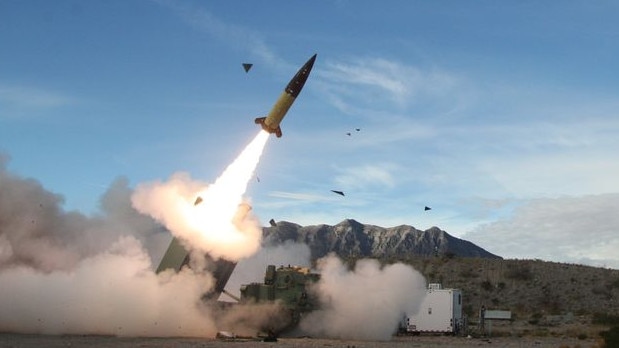US considers long-range missiles to bolster Ukraine’s fight
Officials see new urgency after long reluctance to provide advanced missile system.

The US has been considering approving a long-range missile system for Ukraine, US and European officials said, a move that would come as Russia grapples with unrest in its military leadership and uncertainty on the battlefield.
The Army Tactical Missile System (ATACMS) has a range of about 305km, enough for Ukrainian forces to strike Russian targets far behind the front lines.
President Joe Biden has not signed off on the transfer, in part out of concern among US officials that Ukraine could use it to strike Russian territory and escalate the conflict into a wider war.
Officials said the matter was pending approval at the highest levels and that the deliberations could continue while the US assesses the situation on the ground in Ukraine. Officials in the US and Europe have seen signs, however, that previously reluctant quarters of the US government, namely the White House, have come to see an urgent need to bolster Ukraine’s fight in the coming weeks.
Amid the domestic turmoil in Russia, where over the weekend Wagner mercenary chief Yevgeny Prigozhin staged an abortive mutiny, US and European officials indicated that now might be the time to provide the more advanced weaponry. European officials also have been pressing Washington privately on the need for longer-range missile systems; they have hoped that just as the US reversed course on other weaponry – including Abrams tanks and High Mobility Artillery Rocket System launchers (Himars) – it would do so for the ATACMS missiles.
A senior Ukrainian defence official told The Wall Street Journal that Kyiv had received positive signs in recent weeks that the US had come around on the ATACMS system.
Ukrainian officials have argued that the system is needed, in part, to strike into the Russian occupied Crimean peninsula, which Kremlin forces are using as a base to launch Iranian-made drones.
The US House of Representatives foreign affairs committee last month passed a resolution calling for the Biden administration to supply Ukraine with ATACMS, turning up pressure on the White House and the Pentagon to provide the weapons.
The US had publicly said that it continues to review its assistance to Ukraine based on battlefield dynamics, but officials privately were saying that ATACMS remained off the table as recently as two months ago.
However, with questions over how Ukraine will fare in its recently launched spring offensive, and momentum building after the recent clash between Russia’s military and mercenary forces, US and European officials said the tone in Washington has shifted.
ATACMS rockets, which are fired from the Himars launcher, would enable Ukrainian forces to hit Russian nodes for logistics, command and control well behind front lines.
The precision-guided missiles can hit GPS-located targets identified by intelligence with pinpoint accuracy, impeding Russia’s ability to put its rear-echelon operations out of Ukrainian reach.
The long-distance range of the missiles would likely force Russia to withdraw supplies and command posts to more than 320km from the front, making it more difficult to supply battle troops. Since February last year, the US has provided more than $US40bn in security assistance to Ukraine.
Meanwhile, Pope Francis’s peace envoy, Matteo Zuppi, on Thursday met in Moscow with Russia’s ombudswoman for children’s rights, Maria Lvova-Belova, who is wanted by the International Criminal Court over allegations of illegally transferring Ukrainian children to Russia.
Cardinal Zuppi also met Moscow’s spiritual leader Patriarch Kirill, in the first such trip by a senior Vatican official since President Vladimir Putin sent troops into Ukraine in February last year.
The EU warned that Russia has become more dangerous after a brief mutiny by Mr Prigozhin and his mercenaries that the bloc said exposed Mr Putin as weaker than previously thought.
European Commission President Ursula von der Leyen said the “aftershocks” of the Wagner rebellion were still playing out. “A weaker Putin is a greater danger,” EU foreign policy chief Josep Borrell said as he arrived for a Brussels summit. NATO chief Jens Stoltenberg said that while it was “too early” to draw conclusions, Wagner’s June 24 mutiny revealed “cracks and divisions” in Russia.
The Wall Street Journal



To join the conversation, please log in. Don't have an account? Register
Join the conversation, you are commenting as Logout